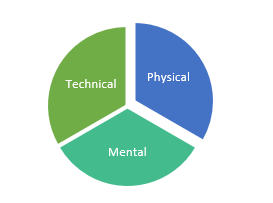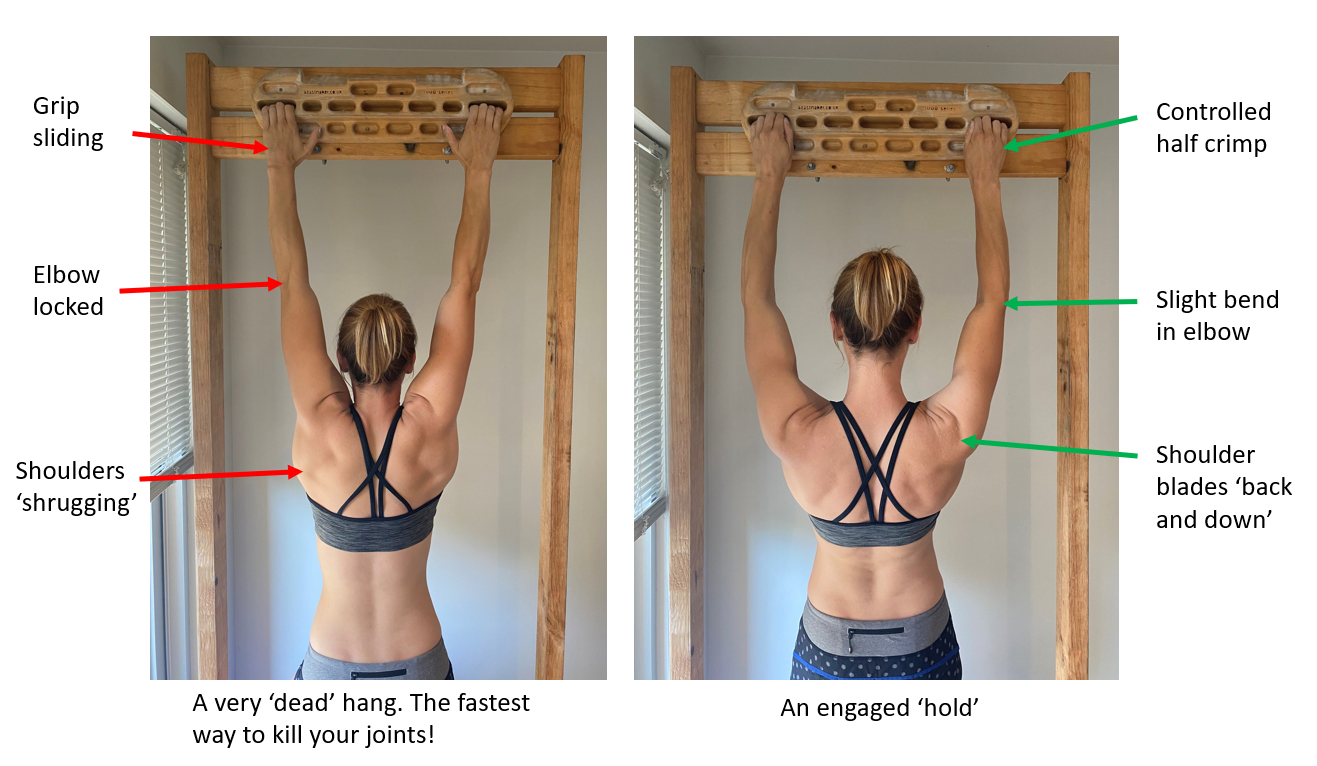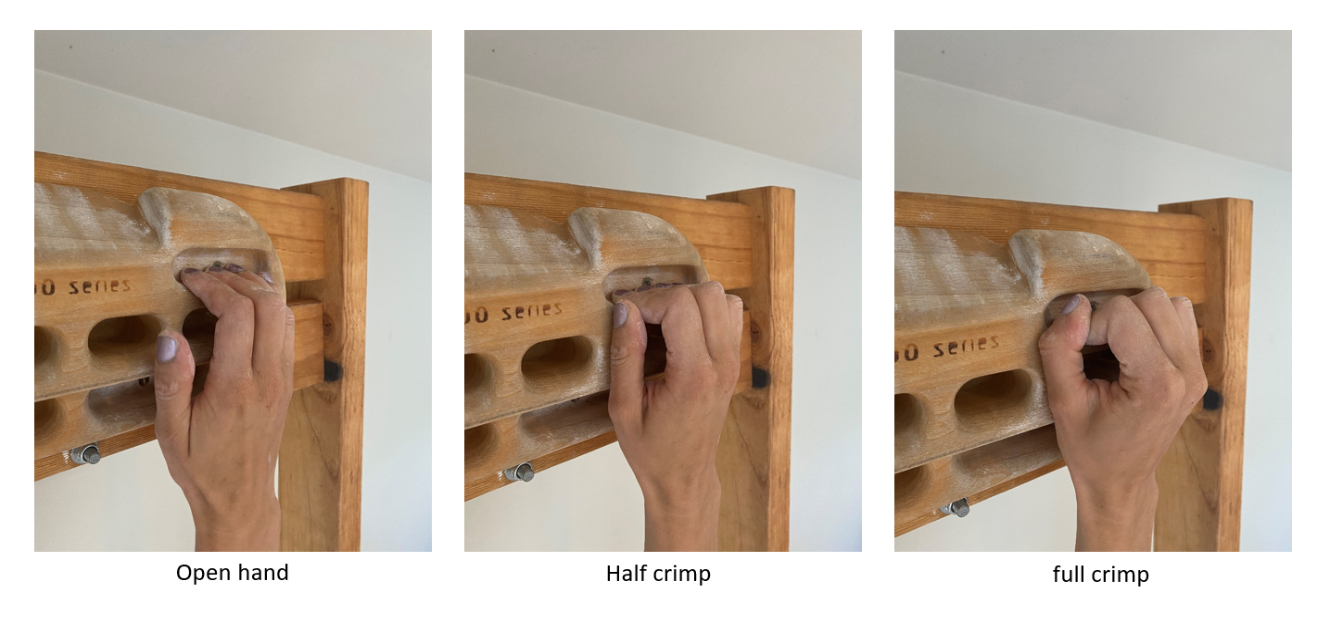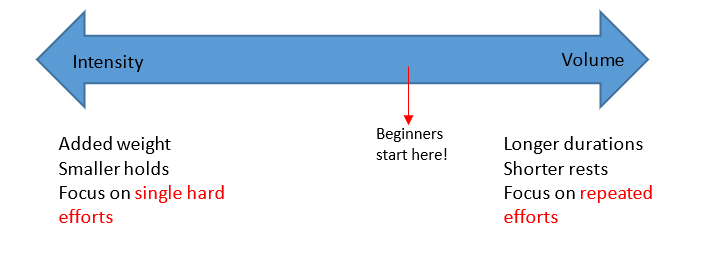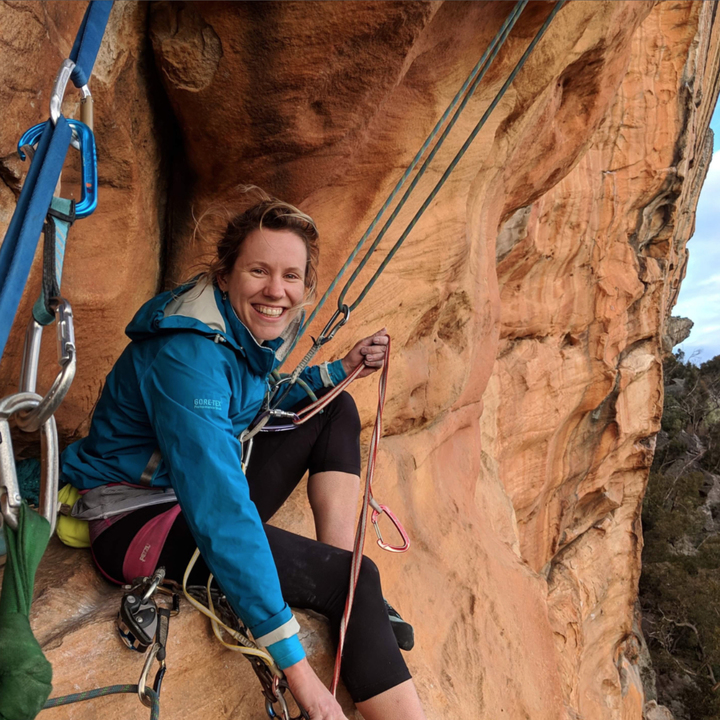Climbing Anchors Ltd (“Climbing Anchors”, “we”, “us”, “our”) is committed to protecting your privacy. We will never share the personal, private information (including but not limited to your name, address, phone, or email) that you provide through www.climbinganchors.com.au or at a Climbing Anchors retail store. Your personal information is used solely for our own purposes in ensuring we can provide you with an agreeable shopping experience.
Climbing Anchors has designed this privacy policy to be as transparent as possible about how we collect, manage, use, process and disclose your personal information, which is subject to the privacy principles set out in the Privacy Act 1988 (Cth) and the Privacy Act 1993 (NZ) and the general law intended to protect your privacy. This will allow you to make informed decisions when shopping with Climbing Anchors.
If we ever make amendments to this Privacy Policy, they will be published here. Shopping with Climbing Anchors constitutes agreement to be bound by the terms of this Privacy Policy and that if any part of this Privacy Policy is found to be unenforceable, the remainder of the Privacy Policy remains in full effect. This Privacy Policy should be read in conjunction with Climbing Anchors Terms & Conditions, of which this Privacy Policy forms part.
Contents
-
-
-
-
-
-
-
-
-
-
-
-
Note this Privacy Policy does not apply to the practices of organisations that Climbing Anchors does not own or control, or to people that Climbing Anchors does not employ or oversee even if offers, coupons or links to their websites appear within our website or other channels.
Collection Of Personal Information
Back To Contents >
Collection of your personal information can occur through various interactions:
- When you make a purchase or register an account on www.climbinganchors.com.au or at our retail stores;
- When you use any of our related services, such as subscribing to our promotions, newsletters or product notifications;
- When you browse our products and services or otherwise interact on www.climbinganchors.com.au;
- When you interact with our customer service team or other representatives, for example, via our online chat, email, telephone calls, letters, or face-to-face interactions;
- When you interact with us on our Social Media, such as liking our posts, commenting on our posts, private messaging us on any of our social media channels;
- When you participate in our affiliate marketing partner network;
- When you participate in our promotions and giveaways, initiatives or any request for additional personal information, such as customer surveys;
- When your authorised representative submits your personal information to us for any purpose reasonably authorised by you, for example if such representative is purchasing a product or service to be delivered to you or as a gift;
- When our third-party analytics and other service providers provide your personal information to us, which was collected by them and disclosed to us pursuant to their separate privacy policies; for example you entered feedback on a third party review website; or
- When you voluntarily submit your personal information to us for any reason.
The types of personal information we may collect include your name, contact details, mailing and delivery addresses, email address, date of birth, your shopping or browsing behaviours, and any other personally identifiable information that you have provided us in any form you may have submitted to us, or in the course of any other forms of interaction between you and us. We do not directly collect, store, or have access to your bank details or credit card details to process your payment or for customer service purposes. Your credit card details are collected, processed and stored directly by our third-party payment processors (Stripe, Square, AfterPay, and PayPal) pursuant to their terms of use and privacy policies. None of your credit card details are permanently stored with us. However, if you have approached us for a refund, our customer service representatives may request your bank account details when processing refunds.
Information We Automatically Collect from Your Device or Browser
Back To Contents >
In addition to the information you provide to us, we use services that automatically collect and process information from your device or browser through cookies and other tracking technology. This information includes your:
- Device Registration Data: this may include the type of mobile device you use; your mobile device’s advertising ID (a unique user ID assigned to your mobile device or operating environment, and stored directly on the device itself, to help advertising services personalise their offers. It can be sent to advertisers and other third parties which can use this unique ID to track the user’s movements, habits, and usages of applications); your IP address, operating system or browser type.
- Device Settings: for example, your language preference.
- Mobile Carrier.
- Information about how you use our website, for example through our use of tracking technology that informs us how many times you use our website and which pages you have viewed.
- Requested and Referring URLs: including, for example, when you are referred to us by an affiliate partner URL or you request to visit an affiliate partner’s URL linked to on our website.
- Imprecise location data collected through your Device: we will collect your IP address, and the country, state and city inferred from your IP address.
Data collected through cookies and other tracking technologies: including, but not limited to, your IP address and domain name, your browser version and operating system, traffic data, imprecise location data, web logs and other communication data, and the resources that you access. Please refer to Section ‘Third Party Cookies And Tracking Technologies’ for more information on data collected through cookies and other tracking technologies.
Information once “de-identified” (or “anonymized”) to the standard required by applicable law is not subject to this Privacy Notice and we may treat it as non-personal information, which means we could use it without restrictions nor obligation to you, except as prohibited by applicable law.
Purpose For Collecting Your Personal Information
Back To Contents >
We may use and disclose your personal information for purposes reasonably necessary to provide you with an agreeable shopping experience, including to:
- register and maintain your user account;
- process your order for our products or services, process or collect your payment for the order;
- deliver the products or services you purchased, including couriers calling or messaging you to obtain your delivery instructions;
- facilitate you transacting via alternative payment methods (such as Paypal, Square, or Afterpay);
- process your returns or refunds in accordance with our Terms and Conditions;
- provide you with supporting services and functions related to your user account, such as saved items in cart, wish-list, brand or product and browser notifications;
- communicate with you in relation to (i) your queries, requests and feedback, (ii) material changes to our Website, Products, Privacy Policy or Terms and Conditions, and (iii) matters relating to the operation of your account via the applicable or appropriate medium including email, SMS, or communicating with you at the telephone number you provide;
- personalise and improve your customer experience when you visit www.climbinganchors.com.au, for example by prioritising products and services appearing in your search results or feed, or in communications we send you;
- monitor and enforce compliance with our Terms and Conditions, including dispute resolution;
- to carry out administration, marketing, planning, fraud detection and loss prevention activities, procurement, product and service development, quality control and research to improve the way we provide products and services to you; and
- comply with (i) internal risk controls, (ii) the terms of our access to payment processing, financial or banking services such as credit card disputes, fraud, billing errors, or (iii) any applicable law, regulation or regulator’s directive
In addition, we may use and disclose your personal information for the following purposes, to:
- send you marketing communications in relation to our sales, products, services, promotions;
- invite you to private customer events;
- process your participation in our promotions and giveaways (including contacting you if you win, displaying your details online, publishing your name in relevant media or disclosing details of winners to relevant authorities, if required by law), initiatives or any request for additional personal information such as customer surveys; and
- conduct market and customer research, analysis or tracking;|
Use And Disclosure Of Your Personal Information
Back To Contents >
We will use and disclose personal information for the primary purposes for which it was collected, and for other related purposes we consider will be within your reasonable expectations. If we use your personal information for any other purpose, we will first obtain your consent, unless we are required or permitted by law to use or disclose your personal information without obtaining your consent.
In the course of conducting our business, we may disclose your personal information to:
- our employees;
- payment processors, who process your payment on www.climbinganchors.com.au;
- logistics providers, such as courier, fulfilment or parcel-pickup services which will deliver your order to you, and parcel return partners;
- our professional advisers, bankers and auditors;
- agents, contractors or service providers who provide operational services to us or who help provide our services to you, such as online cloud storage and processing, marketing optimisation, information technology, telecommunications, market research, customer analysis or tracking, security or other relevant services;
- Government and regulatory agencies law enforcement, legal advisers or similar third parties, if required by law; and
- any other party whom you authorise us to disclose your personal information to.
In limited circumstances we may provide your personal information to third parties such as co-sponsors or promoters of events we are running. In such cases we will take reasonable steps to ensure you are aware that this may be the case when the information is collected and disclosed.
We may use or disclose your personal information for the purpose of direct marketing in relation to our products, services or brand. We may contact you for the purpose of direct marketing via email. If you do not wish to receive such communications, please select the unsubscribe link in our email communications you receive or contact our customer service team and we will respect your request and cease future communications. If you do not unsubscribe in either of these ways, you will be taken to have consented to receiving such communications from us.
We do not disclose personal information we collect to third parties for the purpose of allowing them to direct market their products and services to you.
Third Party Cookies And Tracking Technologies
Back To Contents >
When you visit our website you can browse them, and access important information without revealing your identity. In order to improve our website, we use "cookies" to track your visit. A cookie is a small amount of data that is transferred to your browser by a web server and can only be read by the server that gave it to you. It cannot be executed as code or deliver viruses.
We use session tracking technologies or “session ID cookies” (cookies that expire when you close your browser) on www.climbinganchors.com.au to, for example, track overall site usage, and track and report on use and interaction with ad impressions and ad services.
We use the services of third-party vendors, who may implement one or more persistent tracking technologies (such as cookies, eTags, pixels, web beacons/ GIFs, local storage, or other identifiers on your device and browser settings) in order to recognise you and your device each time you visit our website. We use these technologies to enhance your online experience, such as for preference setting, offer selection, analytics, conversion attribution and fraud reduction. We use the services of third-party vendors for email acquisition, email identity, email marketing, and customer relationship management data platforms in order to help us tailor our communications to you, improve our services, better understand your interests, preferences, propensity to buy from your visits and past transactions on our website.
You may reject first-party and third-party tracking technologies through the settings on your browser. Note that this may result in the loss of website functionality, restrict your use of the website, or delay or affect the way in which the website operates.
Climbing Anchors uses certain Google Analytics functions. Please see this link for how your data is collected and this link for instructions on how to opt-out of any Google Analytics data tracking.
Climbing Anchors may use Google Analytics features based on Display Advertising, including but not restricted to the following: Smart Shopping, and Google Analytics Demographics and Interest Reporting. Using the Google Ads Settings, you can opt-out of Google Analytics for Display Advertising and customise Google Display Network ads.
Unsubscribing From Marketing Communications Or Deleting Accounts
Back To Contents >
If you wish to withdraw your consent for us to send you marketing communications, you can do this as follows:
- through your account settings on our site under ‘Billing Information’, you can uncheck the ‘Subscribe To Newsletter’ option;
- through marketing emails by clicking on the ‘Unsubscribe’ link at the bottom of the email;
- by contacting our Customer Service Team.
Once we receive notification that you wish to withdraw your consent for receiving marketing communications, it may take up to five (5) business days for your withdrawal to be reflected in our systems. Please note you may still receive marketing communications during this period.
Note it is not possible to unsubscribe from non-promotional (transactional) communications relating to your online orders or the operation of your account.
You may remove your account by emailing our customer service team. We will process such a request within a reasonable time from receiving notice from you of your withdrawal of consent. Once the processing is complete, we will no longer collect, use and/or disclose your personal information, except to the extent we retain your personal information for compliance, regulatory or other legal purposes.
Note: If you withdraw your consent for us to use and process your personal information, we may no longer be able to provide you with the related products, services or benefits associated.
Disclosure Of Personal Information To Overseas Recipients
Back To Contents >
We do not disclose information to overseas recipients, and will not sell, share or rent this information to third parties in ways different from what is disclosed in this statement.
Storage & Security Of Your Personal Information
Back To Contents >
All personal information you provide to us is stored on secure servers or hard copy form, both onsite at a Climbing Anchors retail store or with our trusted service provider. Any trusted service provider must observe and meet our information security requirements to minimise the risk of unauthorised access to, and loss, misuse or unapproved alteration of, personal information.
We have in place reasonable security arrangements to ensure that your personal information is adequately protected and secured and to prevent any misuse, interference, loss, unauthorised access or disclosure of your personal information. Security measures include allocating employee specific, multifactor protected accounts for all third-party systems used to manage customer information; reasonable IT security measures such as data encryption, firewalls and antivirus controls; physical measures such as the anonymisation of paper records. We will take reasonable steps to destroy or de-identify any personal information we hold as soon as we no longer need to hold it (as permitted by law).
We will not be responsible for any unauthorised use of personal information by third parties which is attributable to factors beyond our control. We are not responsible for the online privacy practices of third parties.
Further, given that no data transmission over the internet can be guaranteed as completely secure, we cannot guarantee the security of any (personal or other) information you transmit to us, and as such we will not be liable for any breach of security or unintended loss or disclosure of information. Our websites are professionally hosted and operate in a secure environment. You should, however, be aware that there is always an inherent risk in transmitting your personal information via the Internet. Please do not enter credit card details when contacting us via email, text message or through our social media chat functions.
Access To Your Personal Information
Back To Contents >
You may access or correct some personal information including your name, phone number, shipping and billing address by logging in to your user account on www.climbinganchors.com.au under “My Account” and selecting “Billing Details” and/or “Shipping Addresses” to edit each relevant field.
You may request access to your personal information that we hold by submitting a written request to us via emailing our Customer Service Team.
We will do our best to respond to personal information access and correction requests within 30 days. We will provide you with access to your Personal information we hold, unless we are prevented by law from doing so. Before providing such information, we may request additional information from you to confirm your identity, to protect your privacy and the privacy of others.
While Climbing Anchors makes reasonable efforts to provide our users with access to their personal information, there may be circumstances in which we are unable to provide such access, including but not limited to: where the information in question is legally privileged, would compromise the privacy or other legitimate rights of other persons, where the burden or expense of providing access would be disproportionate to the risks to your privacy, where the request is clearly excessive or unfounded, or where the information requested comprises proprietary business information. If we refuse to provide you with access to the information, we will provide you with reasons for the refusal, unless it would be unreasonable to do so. If you wish to complain about a refusal for access to your personal information, you may contact our Customer Service team. We will deal with your complaint within a reasonable time.
Correction Of Your Personal Information
Back To Contents >
You should ensure that all personal information you submit to us is accurate, up-to-date, complete, relevant and not misleading. Failure to do so may result in our inability to provide you with the products and services you have requested. You should keep us updated on any relevant changes to your personal information. You may request to have your personal information that we hold corrected by contacting our Customer Service Team. We will respond to your request to make such a correction within a reasonable time.
If we refuse to correct your personal information as requested, we will provide you with reasons for the refusal, unless it would be unreasonable to do so. If you wish to complain about a refusal for correction of your personal information, you may contact our Customer Service Team. We will deal with your complaint within a reasonable time.
We will take reasonable steps to ensure your personal information likely to be used by us or disclosed by us is accurate, up-to-date, complete, relevant and not misleading. We will also take reasonable steps to notify other entities to which we have disclosed your personal information corrections once they are made.
Updates To Our Privacy Policy
Back To Contents >
We may need to update our Privacy Policy to comply with laws or to reflect changes to our business practices from time to time. Any updates will be posted on our website, and we encourage you to check our website periodically to ensure that you understand our current privacy policy. If you use our website after the Privacy Policy is updated, you will be bound by it. We will notify you if there are any changes to this Privacy Policy that materially affect how we collect, use or process your personal information.
Contact Us
Back To Contents >
If you have any queries, concerns or complaints about our handling of your personal information or about this Privacy Policy, or would like to request access to or correction of your personal information we hold, please contact our customer service team at the below details:
Email: info@climbinganchors.com.au
Telephone: 1300 421 585 (AU)
If you consider your privacy concerns have not been resolved satisfactorily by us, or you wish to obtain more information on privacy requirements, you can contact:
Australia Office of the Australian Information Commissioner on 1300 363 992 or visit their website at www.oaic.gov.au
New Zealand Privacy Commissioner (New Zealand) on 0800 803 909 or visit their website at www.privacy.org.nz
Last Updated: [@date_updated@]
